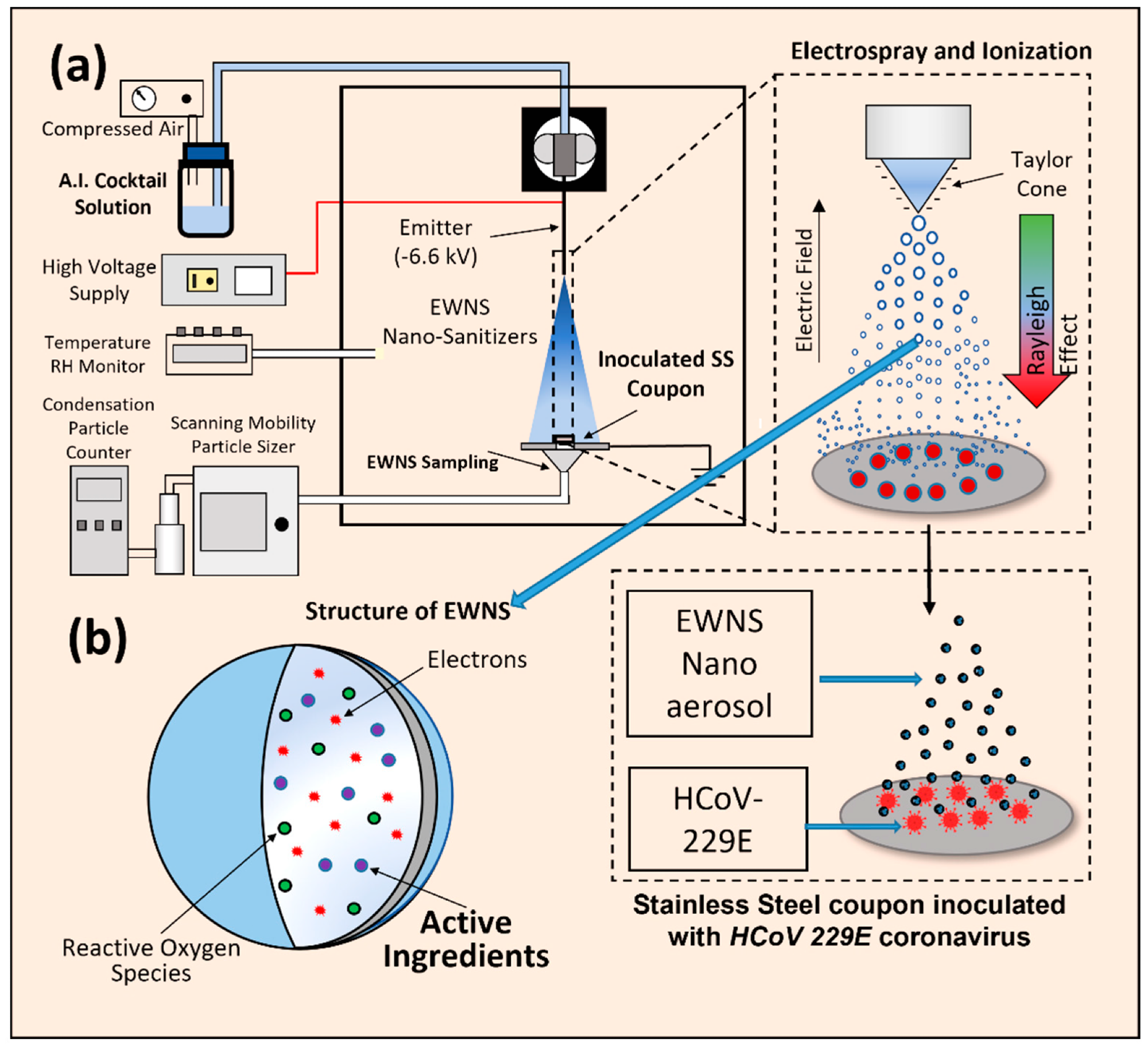In a recent study published in the MDPI journal Nanomaterials, a research group from the United States (US) has shown the possibility of inactivating surrogates of the severe acute respiratory syndrome coronavirus 2 (SARS-CoV-2) on surfaces with the use of specific water nanostructures incorporated with nature-derived antimicrobials.
 Study: Inactivating SARS-CoV-2 Surrogates on Surfaces Using Engineered Water Nanostructures Incorporated with Nature Derived Antimicrobials. Image Credit: peterschreiber.media / Shutterstock
Study: Inactivating SARS-CoV-2 Surrogates on Surfaces Using Engineered Water Nanostructures Incorporated with Nature Derived Antimicrobials. Image Credit: peterschreiber.media / Shutterstock
Even though manifold effective vaccines have been developed against SARS-CoV-2, a causative agent of the coronavirus disease (COVID-19) pandemic, we need more weapons in our armamentarium. Hence, halting the spread of COVID-19 through environmental disinfection and viral deactivation has become an important weapon in the fight against this global health threat.
Various technologies have been introduced and tested for that purpose, such as ultraviolet light, ozone, and acid fogs, just to name a few. The issue is decontaminating sensitive surfaces, such as those used in food processing.
In addition, the unrestricted use of bleach and alcohol-based products also comes with negative externalities for our environment. On the other hand, soaps and hand sanitizers can damage the sensitive human skin and cause irritation and other problems.
The uncharted possibilities offered by engineered nanomaterials
Due to the aforementioned issues, nanotechnology-based solutions have been touted as another promising option since they come with huge advantages over conventional methods. More specifically, engineered nanomaterials (such as polymeric nanoparticles and magnetic nanoparticles) have been employed to inactivate various microorganisms – including coronaviruses.
The nanoscale nature of such engineered materials gives them the edge and a large surface-to-volume ratio, which is the reason why they are so effective against viruses. Still, potential toxicity, low yield, and instability hamper the proper application of engineered nanomaterials, prompting the need to find safer nano alternatives.
This is why a research group from Harvard T. H. Chan School of Public Health, University of Massachusetts Amherst, and Rutgers University in the US has proposed a nanotechnology-based antimicrobial platform known as Engineered Water Nanostructures (EWNS) to tackle the threat of COVID-19.
 Detailed schematic to represent the generation of EWNS and the treatment of HCoV-229E inoculated surface (a). The structure of an individual EWNS (b) containing the A.I., ROS and charges is also shown.
Detailed schematic to represent the generation of EWNS and the treatment of HCoV-229E inoculated surface (a). The structure of an individual EWNS (b) containing the A.I., ROS and charges is also shown.
Generating nanodroplets
The primary process underneath the generation of EWNS is a combined electrospray-ionization process where aerosol nanodroplets are synthesized by using a combination of electrospray and ionization of watery suspension antimicrobials.
In fact, different EWNS were synthesized using single active ingredients and their combinations. They had a size in the nanoscale and contained both antimicrobial agents and reactive oxygen species, which is essential for neutralization purposes.
The researchers then conducted the experiments where they used these mixtures to challenge one common human coronavirus 229E – which causes a common cold – as a surrogate of SARS-CoV-2 on surfaces
High efficacy and swift inactivation
The results of this study have demonstrated that EWNS produced with a cocktail of hydrogen peroxide, lysozyme, citric acid, triethylene glycol, and nisin was able to inactivate 3.8 logs of human coronavirus 229E in merely 30 seconds of treatment.
More specifically, EWNS nano-sanitizers generated with different substances were able to substantially inactivate human coronavirus 229E on a surface by delivering only minuscule levels of active ingredients. At five minutes of treatment, there were no significant differences for all five active ingredients that were assessed.
And among them, hydrogen peroxide mentioned before produced the highest level of so-called biphasic inactivation, which has been seen in many earlier studies with antimicrobial efficacy testing. Furthermore, when compared to the baseline EWNS, the results were not significantly better after adding individual active ingredients.
A promising, nontoxic solution
In a nutshell, these results underscore the efficacy of using EWNS technology as a nano-carrier to deliver a minuscule dose while inactivating a common cold coronavirus, making this an attractive solution against SARS-CoV-2 as well.
“It is worth emphasizing that the active ingredients utilized and delivered using the EWNS nano-carrier platform are nontoxic and nature-derived, and only minuscule amounts are delivered (nanogram levels),” emphasize study authors in this paper published in the journal Nanomaterials.
However, there is also a need for additional studies, as this one focused on inactivating viruses on the surface. Hence, future studies should concentrate on the propensity of the EWNS nano aerosol to interact with the virus suspended in the air to provide efficient inactivation.